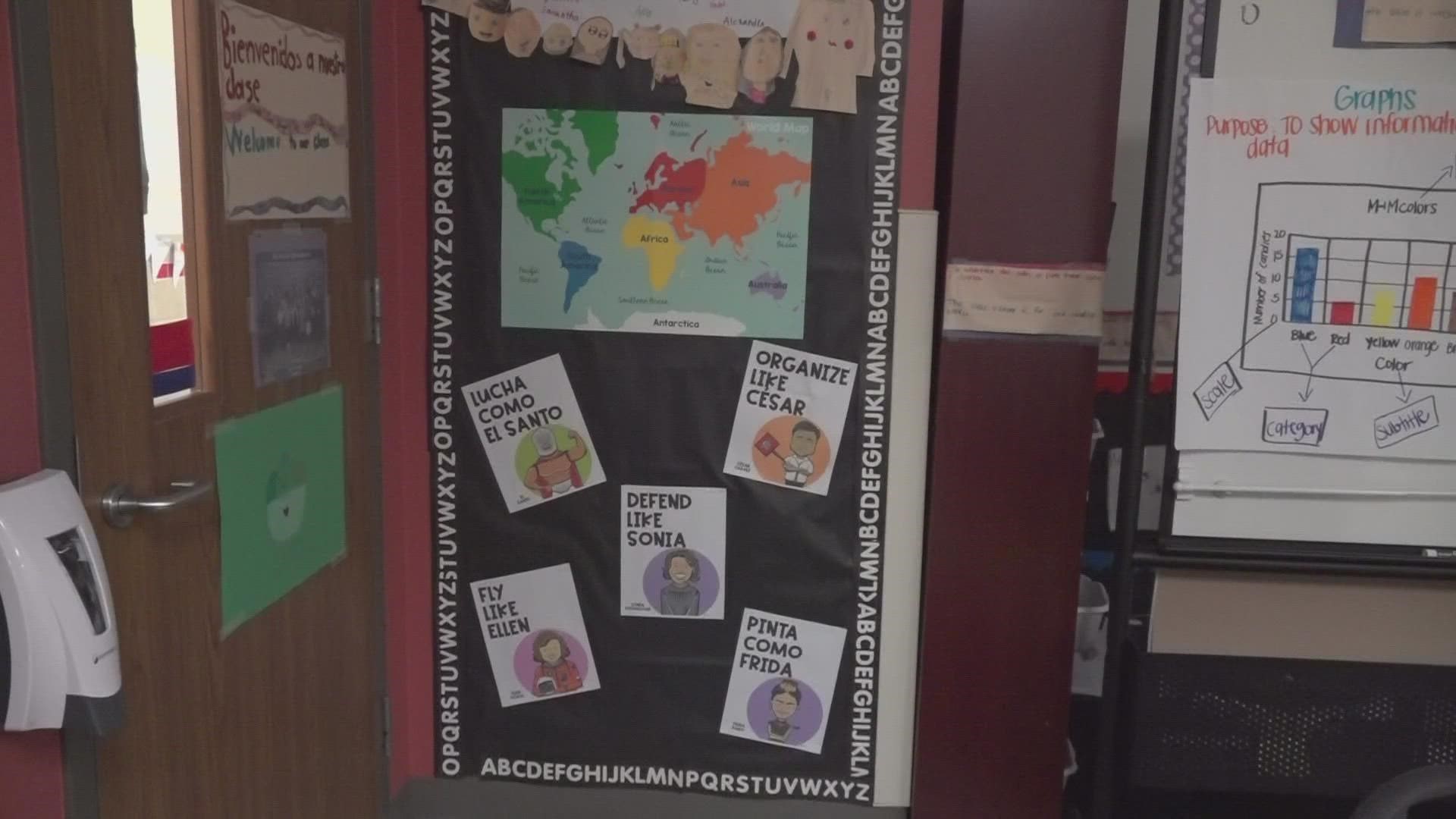GRAND PRAIRIE, Texas — Teachers and administrators from the Lower Kuskokwim School District in Alaska recently visited with Grand Prairie Independent School District in Texas to learn best practices in dual language teaching.
The Lower Kuskokwim School District program is working to preserve the native language of Yup’ik. It's a language that at one time was considered a "dirty language," recalls Christina Robbins, director of elementary school at the Lower Kuskokwim School District in Bethel, Alaska.
"Students by the age of 10 were taken and removed from their home communities, shipped off to another location where they were punished for speaking an indigenous or 'dirty' language," said Robbins. "It wasn’t pleasant what was happening in those cases, and at the end of that time the kids may or may not ever return to their communities."
Robbins explains that those who were taken from their families and then returned to their community no longer "fit in" as they no longer spoke their native language.
"You end up with this really dark time in our history of local members of the community losing their rich history," Robbins said.
So, for the past 10 years, educators from the Lower Kuskokwim School District have been working to form their dual-language program framed after the structure Grand Prairie Independent School Districts uses called Gomez & Gomez.
The program focuses on not only promoting language skills, but also biliteracy and biculturalism. At the heart of dual language programs is ensuring students embrace not only language but their culture and identity.
The Yup’ik dual language program has about a thousand students in over 21 different schools. According to the Alaska Native Language Center, Yup'ik is the state's largest native language, and is spoken by about 21,000 people.
Robbins recalls introducing the program to a parent advisory committee and the response it received from an 84-year-old elder.
"I wish I could go back to school now," the elder told Robbins. "I am 84 years old but I wish I could be in kindergarten again to be able to learn with these books -- because these are the books that would want to make me want to learn."
Prior to 2010, students were fully immersed in the Yup’ik language through third grade. The students then repeated the grade level in English before continuing through their schooling in English.
Dr. Celina McEntire dual-language faciliatory for GPISD explains that the district approaches language development through content. Students have their core classes such as math, science and social studies in both their native language and in English.
“With that, students are truly able to build their first language in the early grades and then add that additional layer of the second language as well,” McEntire said.
Although GPISD focuses its dual-language program on Spanish and English, Robbins said it is inspiring to see where their program could one day be.
"We both are equally passionate about keeping the language and the students we have and making them be whole," Robbins said.

